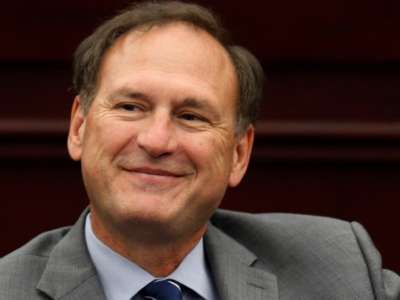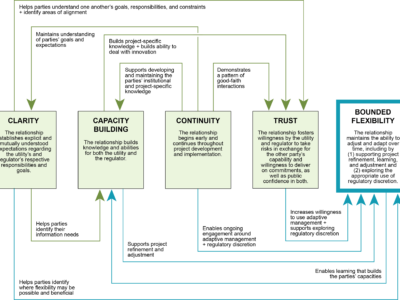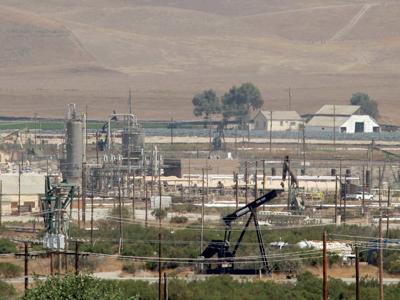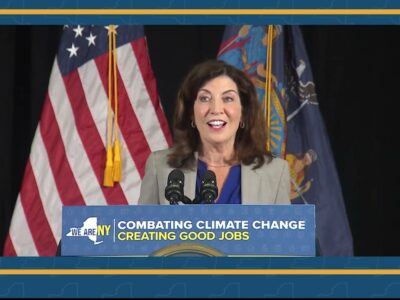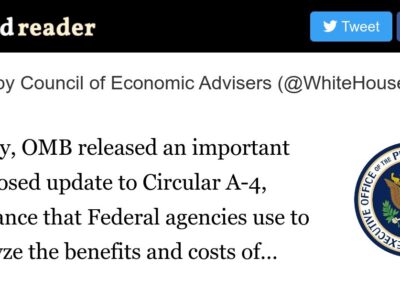Regulatory Policy
Sackett and the Dangers of a New ‘Clear-Statement Rule’
The Supreme Court decision in Sackett v. EPA will be bad for the nation’s wetlands. It is just as bad for democracy.
The Supreme Court decision in Sackett v. EPA limits the Environmental Protection Agency’s ability to defend a large portion of the nation’s wetlands and waterways from pollution. The decision strips key environmental protections from the Clean Water Act by narrowly defining which bodies of water can be regulated under the Act, making it the most …
Continue reading “Sackett and the Dangers of a New ‘Clear-Statement Rule’”
CONTINUE READINGA decade of unraveling the effects of regulation on water innovation
By Michael Kiparsky, with Dave Smith, Nell Green Nylen, Luke Sherman, Alida Cantor, Anita Milman, Felicia Marcus, David Sedlak, Bernhard Truffer, Christian Binz, Sasha Harris-Lovett, Jeff Lape, Justin Mattingly, Dave Owen, Lars Tummers, Buzz Thompson
In a recent post, my colleagues and I reported on our most recent research output in a long series of projects examining the effect of regulation on water innovation. The post describes a new framework for understanding and, ultimately, improving relationships between regulators and wastewater utility managers who are seeking to implement novel technical solutions, …
Continue reading “A decade of unraveling the effects of regulation on water innovation “
CONTINUE READINGThe role of regulatory relationships in wastewater innovation
by Nell Green Nylen, Michael Kiparsky, and Anita Milman
Public water and wastewater utilities are increasingly struggling to meet society’s expectations. Their basic infrastructure is aging, budgets are tight, and they face a barrage of stressors, from population growth to climate change and shifting regulatory expectations. What’s more, in addition to performing their traditional function of protecting human health and water quality, many wastewater …
Continue reading “The role of regulatory relationships in wastewater innovation”
CONTINUE READINGEnvironmental Law Again Front-and-Center at California Supreme Court
Local Government’s Authority to Limit Oil & Gas Development To Be Argued Before Justices
For the first two decades of this century, and under the able leadership of former Chief Justices Ronald George and Tani Cantil-Sakauye, the California Supreme Court was quite active in interpreting and shaping California environmental law. That trend had abated in the last few years–coincidentally or not during the height of the COVID epidemic–with only …
Continue reading “Environmental Law Again Front-and-Center at California Supreme Court”
CONTINUE READINGEPA’s Power Plant Rule is Not Bold. It’s What’s Required.
It’s important to remember the regulatory history—and the growing urgency—of limiting climate change-related carbon pollution from power plants.
Today’s the day for the long-awaited release of Environmental Protection Agency regulations to tackle planet-warming pollution by the nation’s power plants. (Read the announcement here and the full text here.) The EPA is proposing a new standard for fossil fuel-fired power plants to avoid 617 million metric tons of carbon dioxide through 2042. For weeks, …
Continue reading “EPA’s Power Plant Rule is Not Bold. It’s What’s Required.”
CONTINUE READINGNew York Adopts Cap and Trade
Yes, the new NY law includes some bans on natural gas. That’s far from all it does.
Last week, New York Gov. Kathy Hochul signed major climate legislation. Press coverage focused on one small piece of the legislation: a partial ban on natural gas use in new buildings. That’s controversial and easily grasped by the public. But a much bigger part of the new law went almost unnoticed: the legislature’s endorsement of …
Continue reading “New York Adopts Cap and Trade”
CONTINUE READINGThe Energy Transition and the Working Class
Is Biden right? Can we attack climate change while uplifting the lives of workers?
In most of the world, May 1 is International Worker’s Day. It celebrates the collective struggle of workers for better wages and working conditions. That made me start thinking about the efforts that have been made to unite climate action with the interests of workers. That has been a particular emphasis of the Biden Administration …
Continue reading “The Energy Transition and the Working Class”
CONTINUE READINGThe Latin American Lithium Industry is at a Crossroads
Policies set now by Argentina, Bolivia and Chile could determine the course of lithium mining—and the fight against climate change.
It may be one of the most overused clichés favored by headline writers, but nonetheless, it is true that the Latin American lithium industry is at a crossroads. The regulatory decisions made by the Governments of Argentina, Bolivia, and Chile in the following months and years will set the course for the lithium industry, …
Continue reading “The Latin American Lithium Industry is at a Crossroads”
CONTINUE READINGThe Revenge of the Lawyers
Economists ousted lawyers (and law) from their central role in the regulatory process. That’s changing.
As you’ve probably heard, the Biden Administration has proposed aggressive new targets for greenhouse gas emissions from new vehicles. That’s great news. One really important aspect of the proposal relates to the justification for the proposal rather than the proposal itself. Following a recent trend, the justification is based on the factors specified by Congress …
Continue reading “The Revenge of the Lawyers”
CONTINUE READINGRevamping Cost-Benefit Analysis
Proposed changes will make CBA more climate friendly.
Last week, the Biden White House released proposed changes in the way the government does cost-benefit analysis. CBA has been a key part of rule making for forty years. The proposal is very technical and low-key, but the upshot will be that efforts to reduce carbon emissions will get a leg up. In particular, the …
Continue reading “Revamping Cost-Benefit Analysis”
CONTINUE READING




